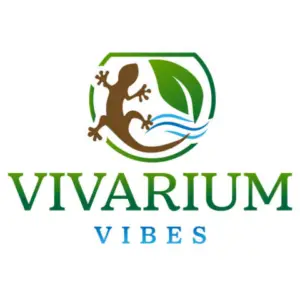This page may contain affiliate links that allow us to make a small commission from qualifying purchases (at no extra cost to yourself). We appreciate your support.
Keeping plants in your reptile’s terrarium doesn’t just make it look amazing but actually helps your reptiles be healthier and more comfortable. Not all plants are safe for reptiles though, and caution should be used when determining plant types for your reptile’s terrarium to be sure they are not toxic. I decided to research a variety of non-toxic plants that reptiles can safely be around.
Suggested safe plants for reptiles:
- African Violet (Saintpaulia)
- Spider Plant (Chlorophytum comosum)
- Snake Plant (Dracaena trifasciata)
- Prickly Pear Cactus (Opuntia)
- Boston Fern (Nephrolepis exaltata)
- Abelia (Abelia grandiflora)
- Lemon Balm (Melissa officinalis)
- Red Sorrel (Rumex acetosella)
- Golden Pothos (Epipremnum aureum)
- Bromeliads (Cryptanthus & Bilbergia)
- String of Pearls (Senecio rowleyanus)
- Urn Plant (Aechmea fasciata)
- Inchplant (Tradescantia zebrina)
- Aloe vera (Aloe Vera)
- Sky Plant (Tillandsia Ionantha)
- Echeveria (Echeveria)
- Lucky Bamboo (Dracaena sanderiana)
- Wax Plant (Hoya carnosa)
- Emerald Ripple (Peperomia caperata)
- Ponytail Palm (Beaucarnea recurvata)
- Amazon Sword (Echinodorus grisebachii)
- Staghorn Fern (Platycerium)
- Weeping Fig (Ficus benjamina)
- Jewel Orchid (Ludisia)
- Heartleaf Philodendron (Philodendron hederaceum)
- Hens And Chicks (Sempervivum tectorum)
Although all of the listed plant types are typically safe to keep in your reptile’s terrarium, tolerance and safety vary with each species. Be sure to read the key information related to each plant type, as some plants are best not ingested and are better suited for reptiles that do not eat plants.
Reptiles that are herbivores and eat plants, may have unique requirements and tolerances. The safest option is to speak with a veterinarian or pet store where you purchase your reptile as they will be able to guide you on the best plants for your pet.
Within this article, I have included some specific information on the suggested plants listed, including certain plant types that work best for specific habitat environments, such as desert terrariums. As a bonus, you will also find a compiled list of over 140 non-toxic plants that are commonly safe for reptiles that I discovered through my research. I hope that through this article, you are one step closer to building a safe, comfortable home for your favorite reptile!
If you are interested in a collection of plants that are toxic for reptiles and their terrariums, see our article on toxic plants for reptiles covering over 350 different options.
1. African Violet (Saintpaulia)
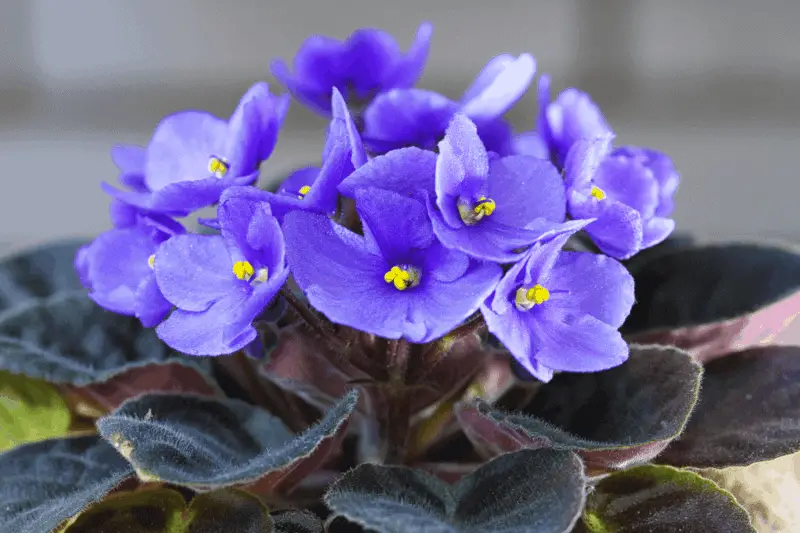
African Violet’s are a great plant choice for most reptile terrariums as they enjoy humidity and offer some color variety. They will need sufficient light so be sure to plant near a good light source.
2. Spider Plant (Chlorophytum comosum)
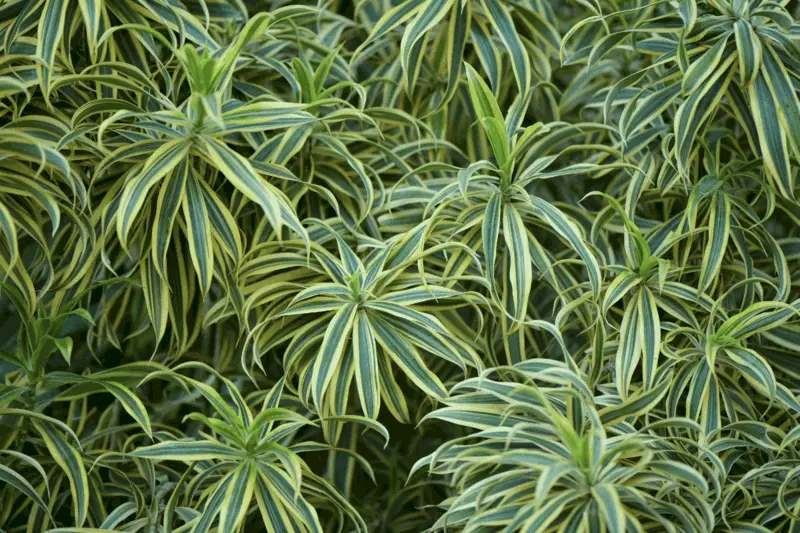
Spider plants are great for cleansing the air around them and do well in humid environments. Use caution when planting within a large reptile’s enclosure as the leaves are brittle and will turn brown when snapped off. Make sure that the roots have good drainage to avoid root rot.
3. Snake Plant (Dracaena trifasciata)
Previously known as Sansevieria trifasciata and also referred to as Mother-in-law’s Tongue, snake plants are great for improving air quality. They are super low maintenance and easy to care for.
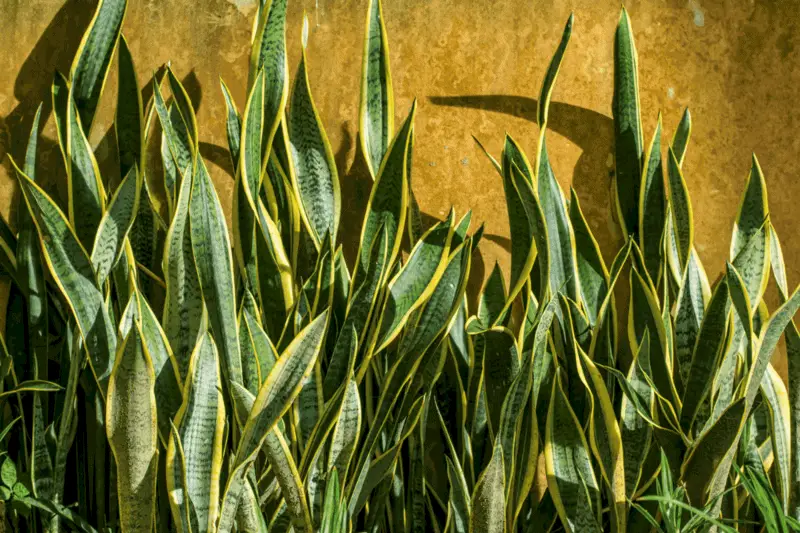
I would NOT use the snake plant if your reptile is a herbivore or nibbles on plants. Although these plants are safe for reptiles to be around, they may cause nausea, vomiting, or diarrhea if ingested. As ironic as it may sound, snake plants would be best suited for a snake enclosure.
4. Prickly Pear Cactus (Opuntia)
The prickly pear cactus is a great addition to any desert style reptile terrarium. Bearded dragons absolutely love to eat the cactus pad leaves. Be sure to remove the spines and cut up the pad leaf into smaller pieces before feeding to your bearded dragon.
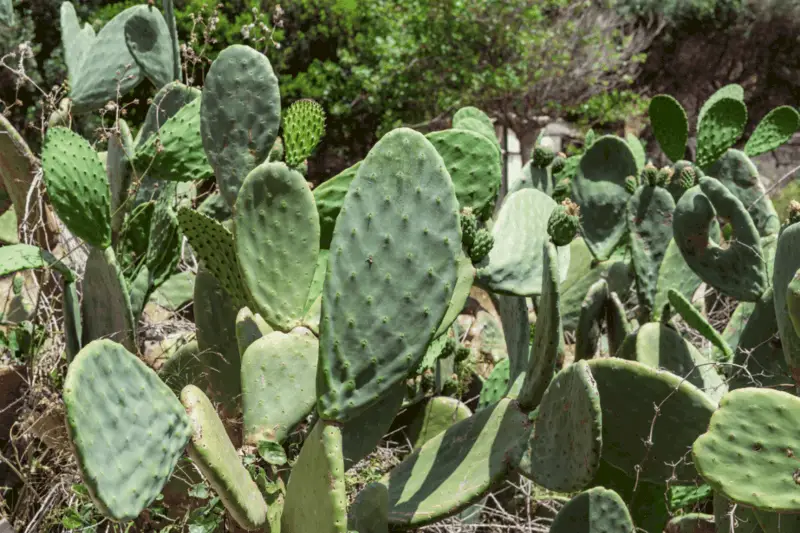
For simplicity and safety, I would suggest using a spineless variety of the prickly pear cactus. This way you don’t have to worry about removing the sharp spines and your reptile can nibble or rub against it without any harm.
5. Boston Fern (Nephrolepis exaltata)
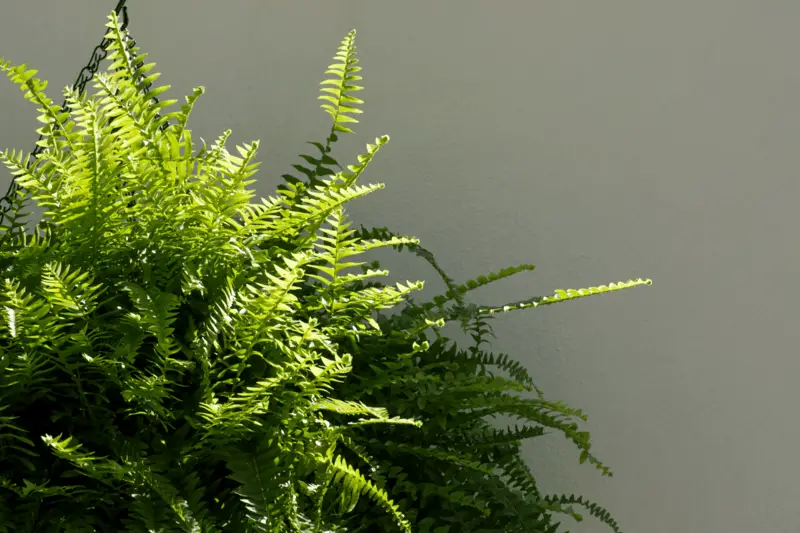
The Boston fern, also known as the Sword fern, would be great for a tropical environment, with high humidity. Originally found in humid forests or swamps, a terrarium with areas of water and pebbles would be an ideal planting location.
6. Abelia (Abelia grandiflora)
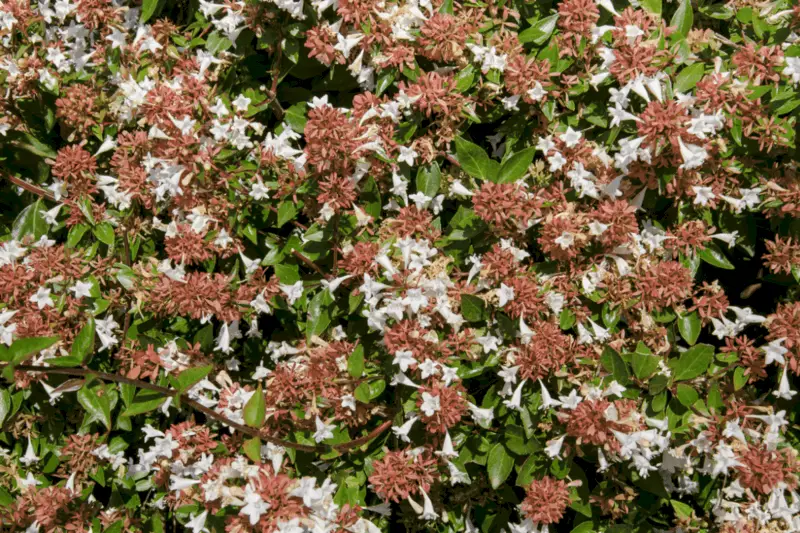
Abelia is a non-toxic plant that is part of the honeysuckle family. Lizards, especially green anoles and geckos love these plants due to the light, sweet scent they provide. They are also great hiding places for smaller reptiles and are easily maintained.
7. Lemon Balm (Melissa officinalis)
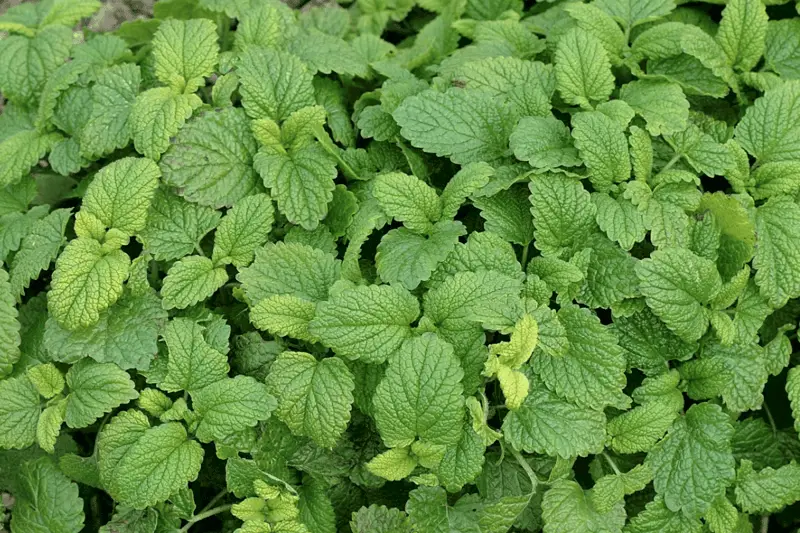
Lemon balm is part of the mint family and a great edible plant for many reptiles. Lemon balm carries a lovely scent and provides a fresh source of vitamins for your reptile. You can place the whole pot within your reptile’s enclosure or cut the stems and leaves for feeding.
8. Red Sorrel (Rumex acetosella)
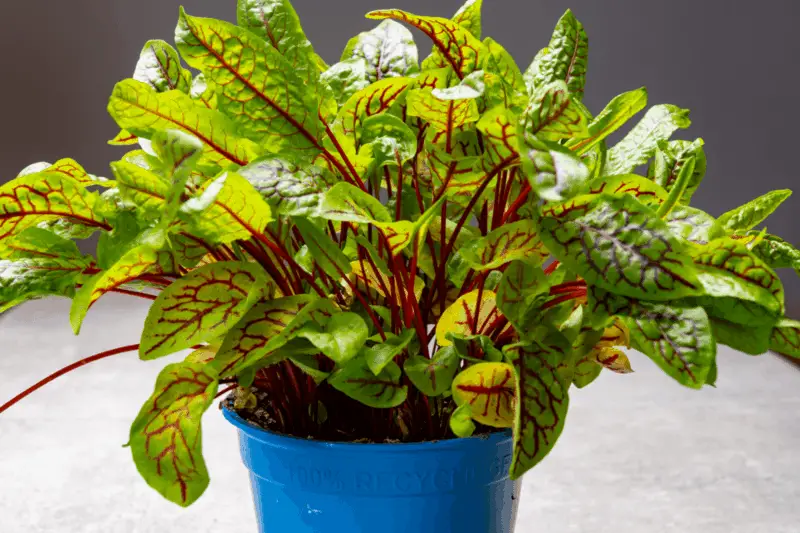
Red Sorrel is a must have if your reptiles eat plants. It provides a fresh source of vitamins and is especially loved by Bearded Dragons and Uromastyx. As a member of the buckwheat family, you can identify this plant by its red flowers and arrow-shaped leaves. Red Sorrel has a lemon flavor and is often described as having a “sour” taste.
9. Golden Pothos (Epipremnum aureum)
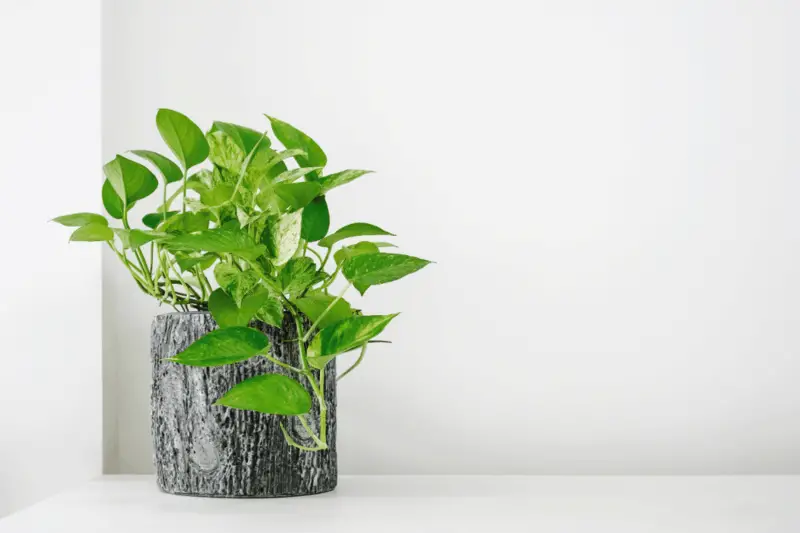
Previously known as Scindapsus aureus and also referred to as Devil’s Ivy, Golden Pothos is a vine plant with bright green and yellow leaves. It is best planted at the back of your reptile enclosure or within the substrate. Golden Pothos is great for smaller reptiles that love to climb and hide but should not be digested in large quantities.
10. Bromeliads (Cryptanthus & Bilbergia)
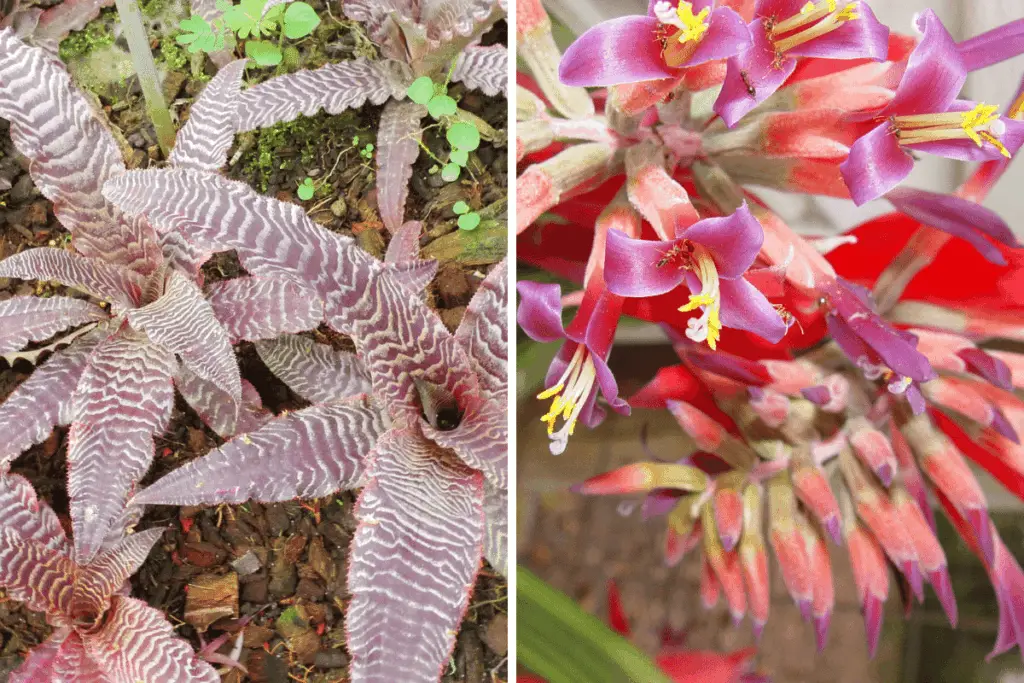
There are many different species of Bromeliads which are great for reptile terrariums, but my top 2 are Cryptanthus and Bilbergia. Bromeliads prefer a humid environment and come in a variety of colors.
11. String of Pearls (Senecio rowleyanus)
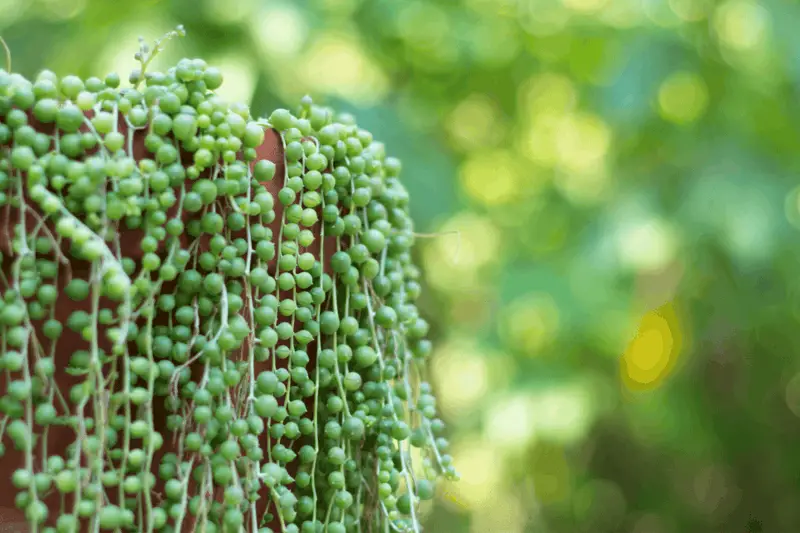
String of Pearls is a type of succulent that has string-like stems with green pearl-shaped leaves. It can grow in warm, humid areas as well as desert environments. Although unsafe for humans and most household pets to digest, string of pearls is safe for reptiles.
12. Urn Plant (Aechmea fasciata)
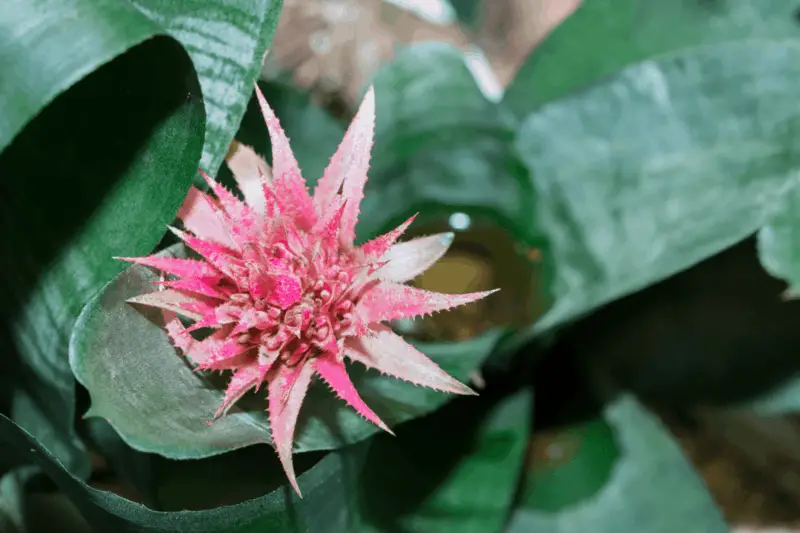
Also known as Silver Vase, the Urn plant can grow up to 3 ft high. This plant is better suited for larger terrariums. Reptiles will enjoy hiding and sleeping among their large leaves and you can’t help but admire the urn’s bright, pink flowers when fully blossomed.
13. Inchplant (Tradescantia zebrina)
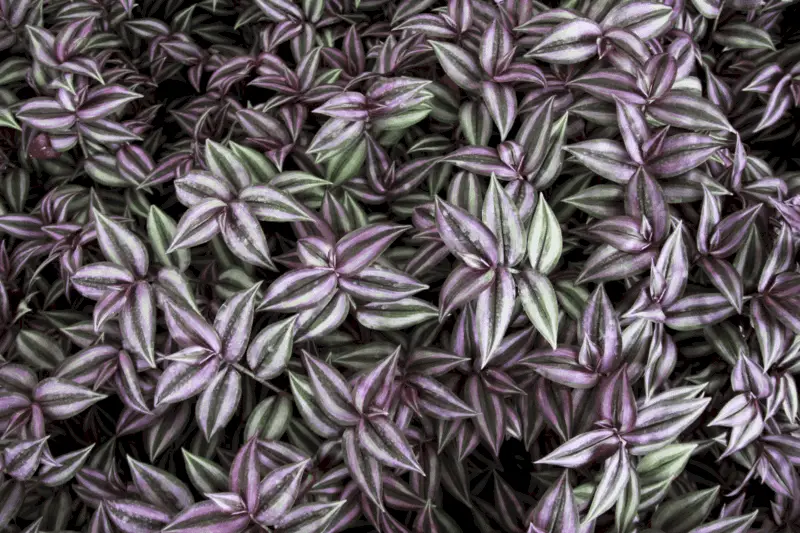
Previously known as Zebrina pendula and also referred to as Wandering Jew, the Inchplant is a favorite of chameleons. They are also relatively low maintenance and can grow in a variety of temperatures, humidity, and light levels.
14. Aloe Vera (Aloe Vera)
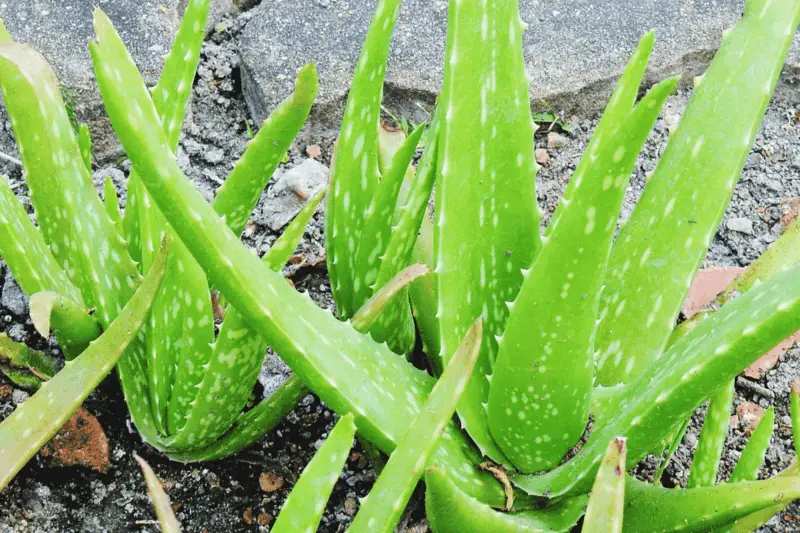
Aloe Vera plants are great for desert habitats and require little watering. They would be best suited for reptiles that do not eat plants as if digested in larger quantities it may cause digestive issues. The sap can soothe burns for larger reptiles, but I would always check with your veterinarian first before application just to make sure it won’t cause any skin irritation to your specific species of reptile.
15. Sky Plant (Tillandsia Ionantha)
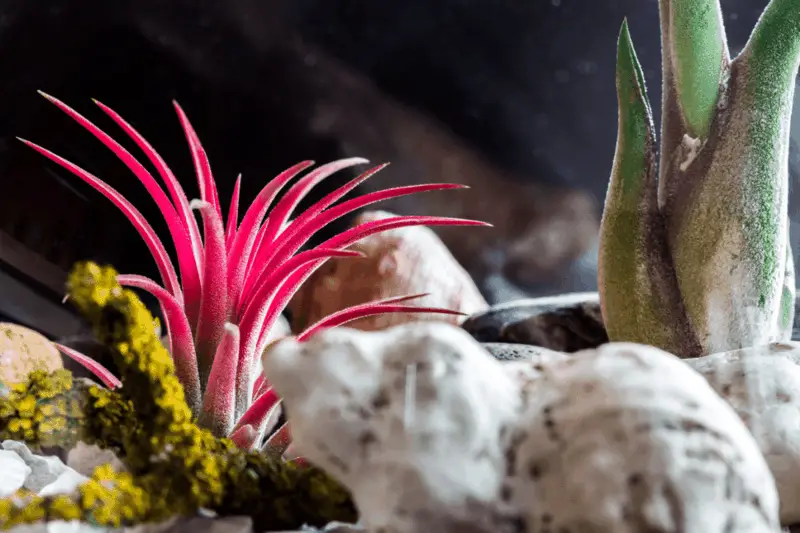
Also known as the Air plant, the Sky plant provides the perfect hiding areas for reptiles and make great additions to bark or logs within your reptile enclosure. They thrive in humidity and do not need to be planted in soil to survive.
16. Echeveria (Echeveria)
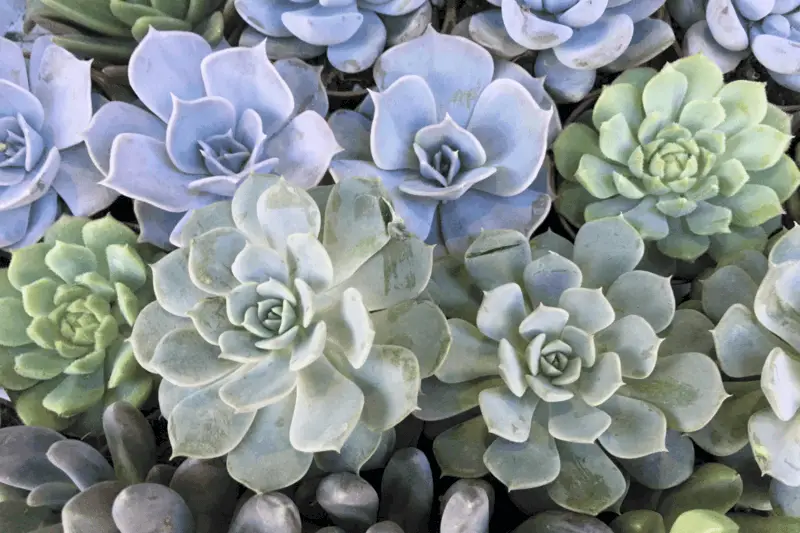
Also referred to as the Painted Lady, Echeveria is a succulent best suited for desert terrariums. They are inexpensive, easy to care for, and can add some color to your reptile’s habitat without being overpowering.
17. Lucky Bamboo (Dracaena sanderiana)
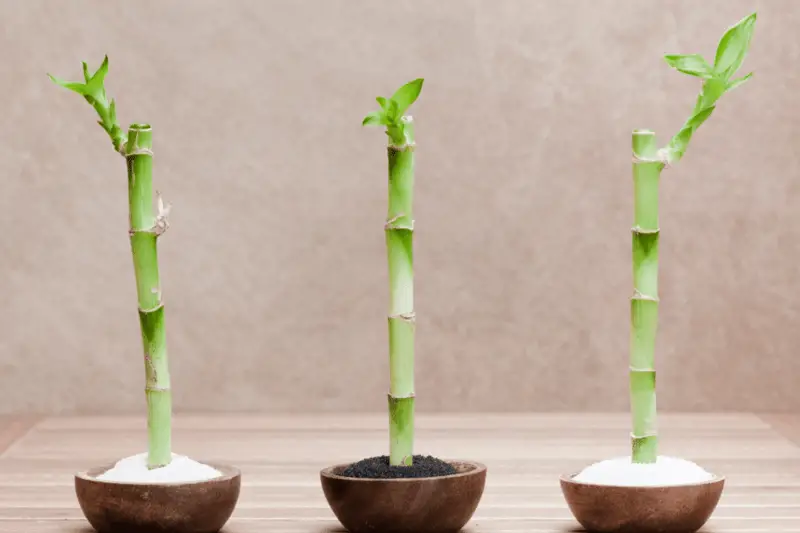
Lucky bamboo is the perfect plant to provide sturdy climbing branches for your reptiles to climb on due to their long bamboo stems that sprout vertical leaves. They are great for semi-aquatic reptile enclosures and grow best when placed in shallow water with pebbles.
18. Wax Plant (Hoya carnosa)
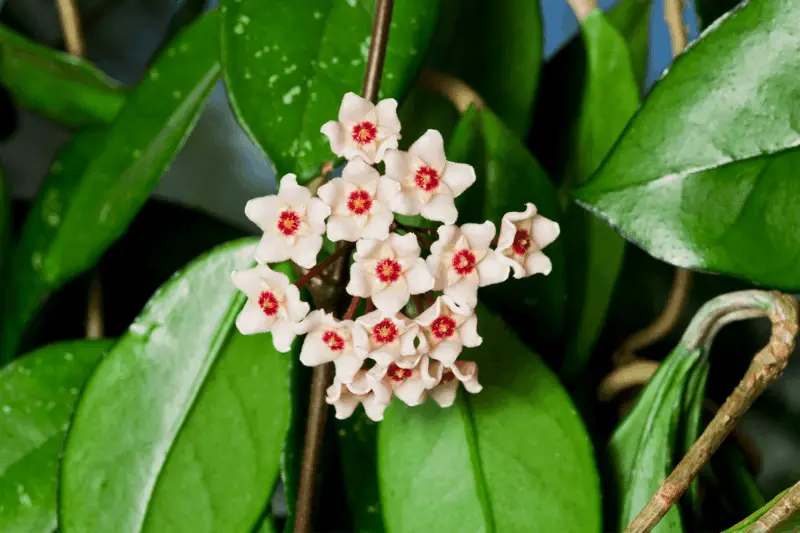
The Wax plant is a climbing vine with green leaves and is useful as a backdrop or vegetation cover for your reptile enclosure. The Wax plant is also able to produce fragrant flowers that produce nectar which is a favorite for crested geckos.
19. Emerald Ripple (Peperomia caperata)
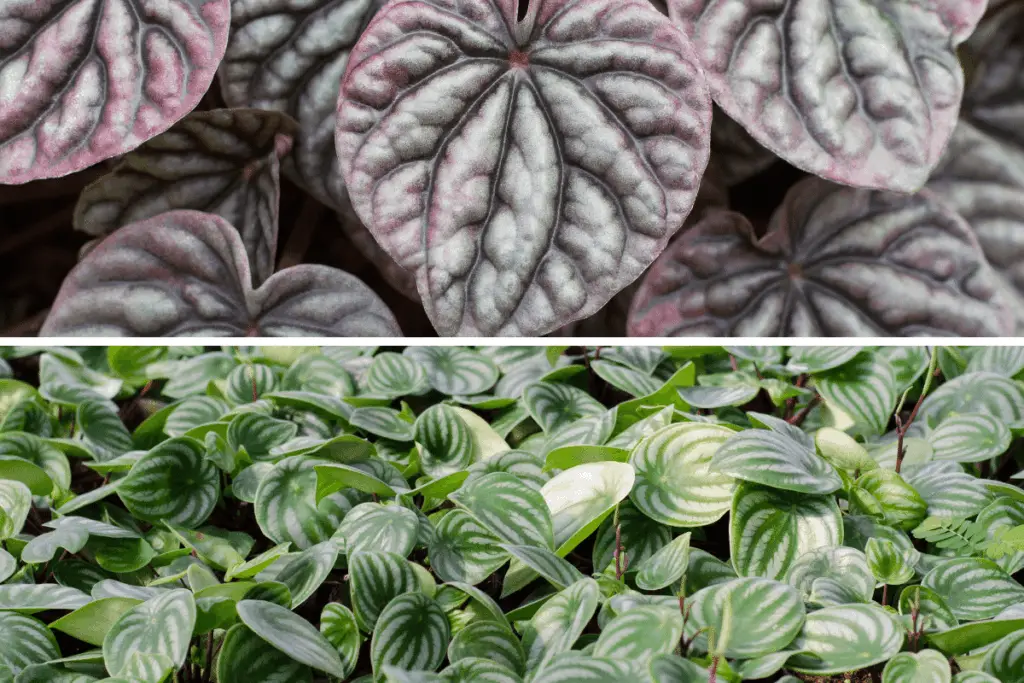
This non-toxic Peperomia, is a great addition to any reptile enclosure and provides great foliage for your reptiles to hide in. The plant has large, heart-shaped leaves and isn’t a fan of cold weather. Try to maintain an average temperature within your enclosure of 65°F-75°F for optimal care.
20. Ponytail Palm (Beaucarnea recurvata)
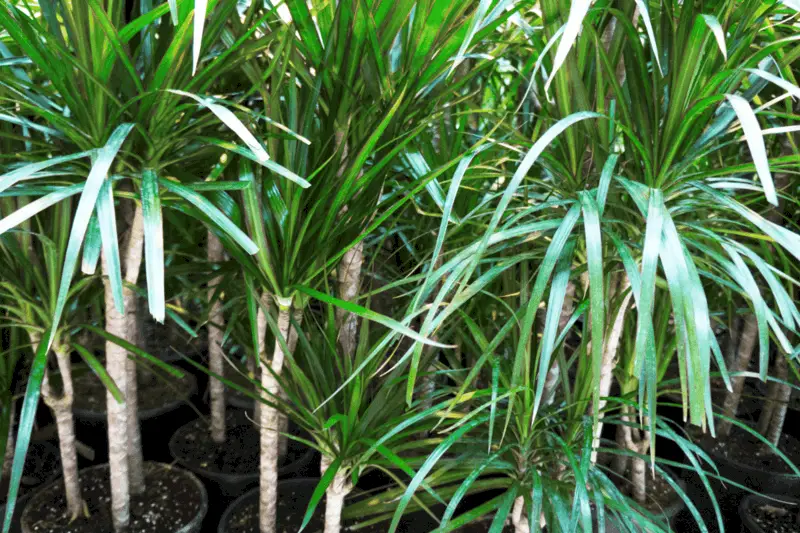
The ponytail palm gets is name from its appearance. The plant consists of a large stump which has long, thin, stems that sprout outward, displaying what looks like hair in the form of multiple ponytails. The Ponytail palm is best suited for dry conditions and would be a great addition to a desert terrarium.
21. Amazon Sword (Echinodorus grisebachii)
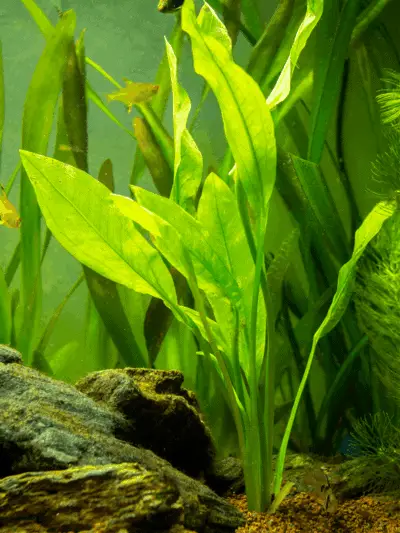
The Amazon sword is a great aquatic plant that can be used in semi-aquatic reptile terrariums or aquariums. It will help keep the water clean and remove any unwanted compounds. The Amazon sword plant can be prone to algae growth so be sure to follow standard lighting requirements. Standard lighting requirements for this type of plant is around 11-12 hours of light a day which can be produced by any sort of lamp or sunlight.
22. Staghorn Fern (Platycerium)
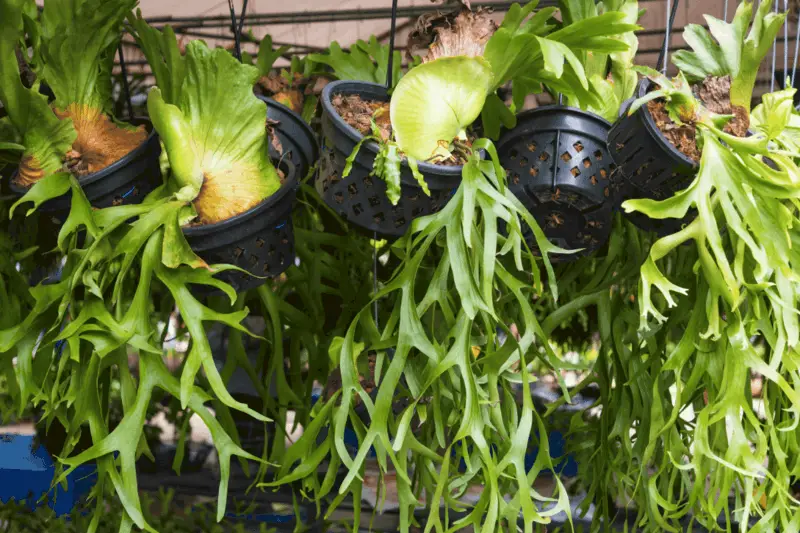
Also commonly known as Elkhorn ferns due to their uniquely shaped fronds (leaflike part of the fern). Staghorn ferns need adequate airflow and can be mounted or planted within your reptile terrarium.
23. Weeping Fig (Ficus benjamina)
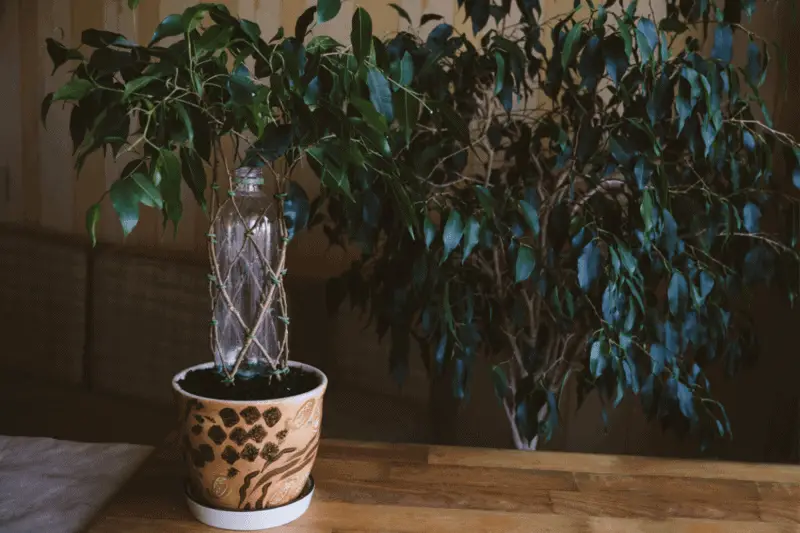
The Weeping fig is best suited for larger terrariums that have a tropical or sub-tropical environment. Even though they can grow up to 60 feet outdoors their growth will be much smaller if used within an indoor terrarium.
24. Jewel Orchid (Ludisia)
Jewel Orchid leaves can be quite brittle so I would suggest only using this plant within an enclosure with smaller reptiles. Although the Jewel Orchid plant itself is non-toxic and safe for reptiles, often, commercially grown orchids are sprayed with toxic chemicals which may be harmful to your pet.
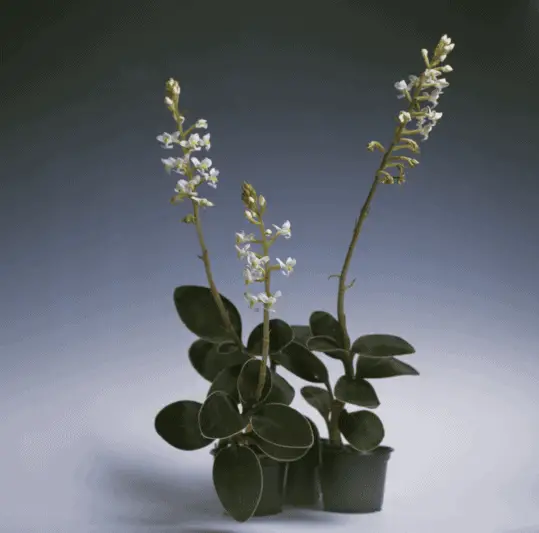
Be sure to inquire about any potentially harmful toxins used during production to be sure your reptiles are kept safe. You may need to rinse the plant or leave it in the sun for a period of time just to be on the safe side.
25. Heartleaf Philodendron (Philodendron hederaceum)
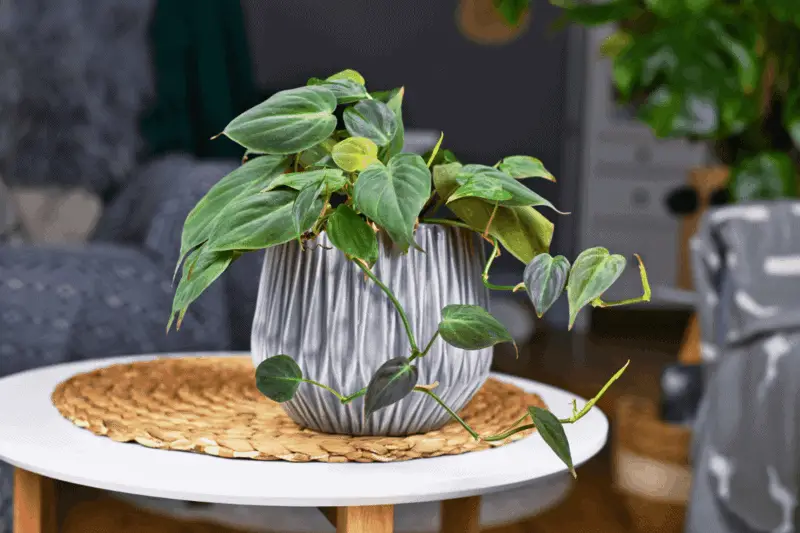
The Heartleaf Philodendron is incredibly forgiving and will tolerate all kinds of neglect including poor soil conditions, low lighting, and inconsistent watering. You will need to pinch your plant every so often to avoid having the stems grow long and lanky. By pinching close to the leaf node, making a clean cut, you will be sure to keep your plant bushy and full.
They would be best suited for reptiles that do not eat plants as if digested it may cause digestive issues and irritation.
26. Hens And Chicks (Sempervivum tectorum)
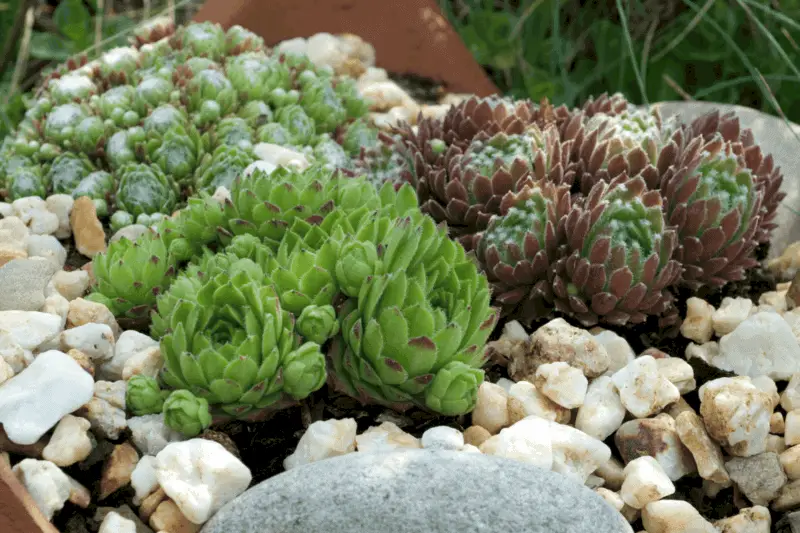
Hens and Chicks are a succulent that requires little watering and prefers dry, desert like conditions. A perfect plant for your bearded dragon’s terrarium! Be sure that they are provided with adequate lighting, preferably full sun for periods throughout the day.
Other Benefits
Keeping plants within your terrarium reduces air pollution and removes nitrate left by animal waste. Plants use that nitrate as a fertilizer which helps to produce a mutually beneficial ecosystem within your reptile terrarium.
Live plants can also provide humidity and oxygen to your reptile enclosure and provide climbing and hiding places for your pets. Having plants within your enclosure can also help you to assess the enclosure’s overall health. If your plants start to wilt or show signs of poor health, that could be an indicator that there are underlying problems that could be affecting your reptile.
Bonus Safe Plant List
If you are interested in a collection of plants that are toxic for reptiles and their terrariums, see our article on toxic plants for reptiles covering over 350 different options.
Here you will find my compiled list of safe plants for reptiles that I discovered through my research. Although the plants that I suggested in the above article are my personal favorites and are most common among other reptile enthusiasts, they are in no way the only options. See below for over 140 other plant species that are also safe for reptiles.
| Common Name | Scientific Name |
| Abelia | Abelia grandiflora |
| African Daisy | Arctotis |
| African Violet | Saintpaulia |
| Aloe Vera | Aloe Vera |
| Alyssum, Sweet | Lobularia maritima or Alyssum maritimum |
| Amazon Sword | Echinodorus grisebachii |
| American Elm Also Elm | Ulmus americana |
| Anthemis Also Known As Chamomile | Anthemis |
| Arbutus | Epigaea repens |
| Asparagus Fern | Asparagus plumosus or A. setaceus |
| Aspen | Populus tremuloides – Tree |
| Aster | Aster – all species |
| Baby’S Breath Also Known As Gypsophila | Gypsophila elegans |
| Baby’S Tears | Helxine soleirolii |
| Bachelor Buttons Also Cornflower | Centaurea cyanus |
| Bamboo | Phyllostachys aurea |
| Begonia | Begonia Corallina de Lucerna |
| Benjamina Also Ficus Also Weeping Fig | Ficus benjamina |
| Birch | Betula – Tree |
| Bird’S Nest Fern | Asplenium nidus |
| Boston Fern | Nephrolepis exaltata |
| Bottle Brush | Callistemom |
| Bougainvillea | Bougainvillea glabra – Vine |
| Bridal Veil | Tripogandra multiflora |
| Bromeliads | Aechmea; Bilbergia; Cryptanthus |
| Calendula Also Pot Marigold | Calendula officinalis |
| Camellia | Camellia japonica |
| Cast-Iron Plant | Aspidistra elatior |
| Chamomile Also Anthemis | Anthemis |
| Chickweed | Stellaria media |
| Chinese Hibiscus Also Hibiscus Also Rose Of China | Hibiscus rosasinensis |
| Cissus Also Kangaroo Vine Also Grape Ivy | Cissus antarctica – Vine |
| Coleus | Coleus blumei |
| Corn Plant | Dracaena fragrans |
| Cornflower Also Bachelor Buttons | Centaurea cyanus |
| Cottonwood | Populus deltoides – Tree |
| Crabapple | Malus – Tree |
| Creeping Charlie | Pilea nummulariifolia |
| Croton | Codiaeum sp. |
| Daisy, African | Arctotis |
| Daisy, Livingston Also Ice Plant | Dorotheanthus bellidiformis or Mesembryanthemum criniflorum |
| Dandelion | Taraxacum officinale |
| Dill | Anethum graveolens |
| Dracaena | Dracaena – all species |
| Easter Cactus | Rhipsalidopsis rosea – Cactus/Succulent |
| Echeveria Also Painted Lady | Echeveria |
| Elk’S Horn Fern Also Staghorn Fern | Platycerium bifurcatum |
| Elm | Ulmus americana |
| Emerald Ripple Also Peperomia | Peperomia caperata |
| Ficus Also Benjamina Also Weeping Fig | Ficus benjamina |
| Fire Thorn | Pyracantha |
| Fuchsia | Fuchsia |
| Gardenia | Gardenia jasminoides |
| Geranium | Pelargonium sp. |
| Gloxinia | Sinningia speciosa hybrids |
| Gold-Dust Dracaena | Dracaena godseffiana |
| Golden Pothos | Epipremnum aureum – not to be digested in large quantities |
| Grape Ivy Also Cissus Also Kangaroo Vine | Cissus antarctica – Vine |
| Gypsophila Also Baby’S Breath | Gypsophila elegans |
| Heartleaf Philodendron | Philodendron hederaceum |
| Heavenly Bamboo | Nandina domestica |
| Hens And Chicks | Sempervivum tectorum – Cactus/Succulent |
| Hibiscus Also Chinese Hibiscus Also Rose Of China | Hibiscus rosasinensis |
| Honeysuckle | Lonicera – Vine |
| Hoya Also Wax Plant | Hoya carnosa – Vine |
| Ice Plant Also Livingston Daisy | Dorotheanthus bellidiformis or Mesembryanthemum criniflorum |
| Impatiens Also Patience Plant | Impatiens sultanii or Impatiens wallerana |
| Inchplant | Tradescantia zebrina |
| Indian Hawthorn | Raphiolepis indica |
| Jade Plant | Crassula argentea |
| Japanese Aralia | Fatsia japonica |
| Jasmine | Jasmine officinale grandiflorum |
| Jewel Orchid | Ludisia |
| Kalanchoe | Kalanchoe – Cactus/Succulent |
| Kangaroo Vine Also Cissus Also Grape Ivy | Cissus antarctica – Vine |
| Kentucky Coffee Tree | Gymnocladus – Tree – Coffee is Toxic |
| Lavender Also English Lavender | Lavandula officinalis or Lavandula spica |
| Lemon Balm | Melissa officinalis |
| Lilac | Syringa |
| Livingston Daisy Also Ice Plant | Dorotheanthus bellidiformis or Mesembryanthemum criniflorum |
| Lucky Bamboo | Dracaena sanderiana |
| Maidenhair Fern | Adiantum pedatum |
| Manzanita | Arctostaphylos |
| Marigold | Calendula officinalis |
| Mock Orange | Philadelphus |
| Monkey Plant | Ruellia makoyana |
| Moses-In-The-Cradle | Rhoeo spathacea or Rhoeo discolor |
| Mother Of Pearl | Graptopetalum paraguayen |
| Mulberry | Morus alba – Tree |
| Nasturtium | Tropaeolum majus |
| Natal Plum | Carissa grandiflora |
| Norfolk Island Pine | Araucaria heterophylla |
| Painted Lady Also Echeveria | Echeveria derenbergii – Cactus/Succulent |
| Painted Nettle | Coleus |
| Pampas Grass | Cortaderia selloana |
| Parlor Palm | Chamaedorea elegans bella |
| Parsley | Petroselinum crispum |
| Passionflower | Passiflora caerulea – Vine |
| Patience Plant Also Impatiens | Impatiens sultanii or Impatiens wallerana |
| Peperomia Also Emerald Ripple | Peperomia caperata |
| Petunia | Petunia hybrida |
| Phoenix | Phoenix roebelenii |
| Piggyback Plant | Tolmiea menziesii |
| Pilea | Pilea sp. |
| Pink Polka-Dot Plant | H. ypoestes sang. |
| Ponytail Palm | Beaucarnea recurvata |
| Poplar | Populus – Tree |
| Pot Marigold Also Calendula | Calendula officinalis |
| Prayer Plant | Maranta leuconeura kerchoveana |
| Prickly Pear Cactus | Opuntia |
| Purple Passion Also Purple Velvet Also Velvet Plant | Gynura aurantiaca |
| Red Sorrel | Rumex acetosella |
| Rose Of China Also Chinese Hibiscus Also Hibiscus | Hibiscus rosasinensis |
| Rubber Plant | Ficus elastica decora |
| Russian Olive | Elaeagnus angustifolia – Tree |
| Sensitive Plant | Mimosa pudica |
| Sky Plant | Tillandsia Ionantha |
| Snake Plant | Dracaena trifasciata |
| Spider Plant | Chlorophytum comosum |
| Split-Leaf Philodendron Also Cut-Leaf Philodendron | Monstera deliciosa |
| Spruce | Picea sp. – Tree |
| Squirrel’S-Foot Fern | Davallia trichomanoides or Davallia bullata |
| Staghorn Fern Also Elk’S Horn Fern | Platycerium |
| Star Jasmine | Trachelospermum jasminoides |
| String of Pearls | Senecio rowleyanus |
| Swedish Ivy | Plectranthus nummularius – often sold as Plectranthus australis |
| Sweet Alyssum | Lobularia maritima or Alyssum maritimum |
| Sword Fern Also Western Sword Fern | Polystichum munitum |
| Tahitian Bridal Veil Also Bridal Veil | Tripogandra multiflora |
| Ti Plant | Cordyline terminalis |
| Tree Mallow | Lavatera trimestris |
| Umbrella Plant | Schefflera arboricola |
| Urn Plant | Aechmea fasciata |
| Velvet Plant Also Purple Passion, Purple Velvet | Gynura aurantiaca |
| Wax Begonia | B. semperflorens |
| Wax Plant Also Hoya | Hoya carnosa – Vine |
| Weeping Fig Also Benjamina Also Ficus | Ficus benjamina |
| Willow | Salix sp. – Tree |
| Yucca | Yucca filamentosa |
| Zebra Plant | Aphelandra squarrosa |
| Zinnia | Zinnia elegans hybrids |

Meet Brad, the creator behind Vivarium Vibes, where his deep connection with nature and animals truly comes to life.
